IAEA Director General Rafael Mariano Grossi in the 68th IAEA General Conference. (Photo: WAJ)
Let me begin by joining the General Conference in welcoming the Cook Islands and the Federal Republic of Somalia to the IAEA family.
Mr President, Excellencies, Ladies and Gentlemen,
Since we last gathered, social, political and ecological challenges across the world have grown no lighter.
Through the International Atomic Energy Agency’s unique mandate, we have the responsibility of addressing issues that affect all of humanity. Our priorities include reinforcing and preventing the erosion of a non-proliferation regime that has underpinned international peace and security for more than half a century; the ever-more-present existential threat of climate change, and the ongoing injustice of poverty, disease and hunger.
Current uncertainty and political disagreement should not make us forget common priorities, even beyond immediate grievances. The work we do cannot be put on hold until geopolitical tensions ease.
The IAEA is all of us – the Secretariat and the Member States. Our safeguards inspectors are inspecting ever more nuclear facilities and material. The tasks of our safety experts range from devising safety standards used in hospitals to monitoring nuclear power plants whose safety is being compromised by war.
Every day since we last gathered a year ago, we have been delivering real progress under our flagship initiatives: Zoonotic Diseases Integrated Action (ZODIAC), Nutec Plastics, Rays of Hope, and Atoms4Food.
It is a pleasure to update you on that progress.
Let me begin with our newest initiative, Atoms4Food. It galvanizes our efforts in Food and Agriculture, the most sought-after area of our technical cooperation. Nuclear science and its applications are potent tools helping us to tackle the hunger crisis. They are supporting farmers, communities and economies adapting to the enormous challenges of climate change. Meanwhile, they are helping to reduce the negative impact agricultural production can have on the environment, scarce water resources and fragile ecosystems.
Atoms4Food builds on 60 years of the joint experience of the IAEA and the FAO. Since I launched the initiative together with Mr Qu Dongyu, Director-General of the Food and Agriculture Organization (FAO) last year, there has been significant interest from Member States and international partners, including multilateral development banks.
Atoms4Food offers tailor-made approaches to enhancing agricultural and livestock productivity, improving natural resources management, reducing food losses, ensuring food safety and boosting nutrition.
The initiative’s roadmap has now been finalised. During a briefing in July we underscored its strategic value. We focused on its four key pillars of engagement: awareness raising and stakeholder engagement; research and development; technical cooperation and resource building; and partnership and resource mobilization.
I encourage you to join us tomorrow and Wednesday at the Scientific Forum, which focuses on Atoms4Food - Better Agriculture for Better Life.
Water is life, and water scarcity threatens life. Last year I launched the Global Water Analysis Laboratory (GloWAL) Network to empower countries to generate the chemical, biological and isotopic water data crucial to managing their water resources. When it comes to creating a usable scientific database, a holistic and coordinated approach is key.
Over the coming five days, as we meet here in Vienna, more than 200 000 people around the world will be told they have cancer. Almost 100 000 families will face the death of a loved one who suffered from this terrible disease. Most of them will be living in low or middle-income countries. Too many will never know they have cancer because they were not able to be diagnosed. Too many will mourn a death that could have been prevented with better health care. The IAEA is helping to change this terrible reality by working with Member States to expand access to quality medical imaging and radiotherapy treatment.
In February 2022, I launched Rays of Hope: Cancer Care for All at the sidelines of the African Union summit, in close coordination with the World Health Organization. Since then, 86 countries have reached out to the Agency for support under Rays of Hope and concrete actions have been initiated in more than 30 Member States.
Four cancer care and research institutions were recently recognized as Rays of Hope Anchor Centres, joining the five announced at last year’s General Conference. This brings the total to nine Anchor Centres spread across all regions.
Cancer is not the only threat to our health and wellbeing. Every week we ingest and breath-in microplastics. One academic study has compared the volume to 50 plastic bags a year and another to one credit card a week. Regardless of the exact volume, what we know is, one, microplastics are where they should not be: in our ocean and the wider environment, and two, we do not yet know enough about their movement and impact.
In January I travelled to Antarctica to mark the start of a unique mission by IAEA scientists studying microplastics in this pristine environment. It is part of NUTEC Plastics, which is assisting Member States with two important tasks: to reduce the amount of plastic waste by using irradiation in recycling, and to make better-informed policy decisions by using isotopic and other techniques to study marine microplastics pollution.
Under NUTEC Plastics, we are witnessing significant global engagement, with 86 Member States participating in microplastic monitoring, and 39 in plastic recycling, four of which are progressing towards establishing pilot-scale plants. The Global Marine Monitoring Network continues to grow with 99 Member States now benefiting from capacity building efforts or participating as partners for research and development activities.
When it comes to communicable diseases, we knew COVID-19 would not be the last zoonotic disease to make headlines. In the past year Member States have continued to face zoonotic outbreaks, most recently of Mpox.
ZODIAC strengthens Member States’ preparedness. It improves their capability to detect viruses and respond quickly to outbreaks. So far 150 Member States have nominated a ZODIAC National Coordinator, and 128 have nominated a ZODIAC National Laboratory.
Under ZODIAC, the newly developed Respiratory Disease Phenotype Observatory’s platform is now being tested in collaboration with the University of Vienna.
ZODIAC has trained 1 500 people from more than 95 Member States. In addition, laboratories in 41 countries have received equipment for serology and molecular diagnostic or genetic sequencing. Equipment is planned to be delivered to a further 7 countries.
By October 2023, the Agency had already trained scientists from Veterinary Diagnostic Laboratory (VETLAB) Network partner laboratories in Africa and Asia, including several ZODIAC National Laboratories, to perform assays for poxviruses, including orthopoxviruses to which mpox belongs. Since then, a workshop has been delivered for affected Member States.
Emergency support has been offered, not only in response to disease outbreaks, but also in response to earthquakes and oil spills.
Many of our initiatives and much of our assistance to Member States benefit from our unique laboratories. Since the last General Conference, we have passed a major milestone. Thanks to the leadership and vision of its supporters, we concluded our fundraising under ReNuAL2. The modernization of IAEA Nuclear Applications Laboratories in Seibersdorf is progressing towards completion by the end of this year and we expect them to be operational in 2025.
The 68th IAEA General Conference, UN in Vienna. (Photo: WAJ)
Mr President,
The technical cooperation programme remains a foundational part of the IAEA and works hand in glove with the initiatives I have just outlined. In 2023, the technical cooperation programme assisted 150 countries and territories, 35 of which were least developed countries. The main areas of work were Food and Agriculture, Health and Nutrition, and Safety. The programme achieved an implementation rate of 85.5%, a slight increase on 2022. We supported almost 1 900 fellowships and scientific visits, and delivered more than 2 500 expert and lecturer assignments, as well as enabled nearly 4 000 people to take part in training courses.
Thanks to the contributions of Member States, the TC Fund Rate of Attainment reached 97.5%. Human capacity building is at the core of sustainable socioeconomic development, and I thank our Member States for their consistent support of the TC programme. I take this opportunity to remind Member States of the importance of making their TCF and NPC payments on time and in full.
Following the request of the General Conference last year, planning is well under way for the IAEA Ministerial Conference on Nuclear Science, Technology and Applications and the Technical Cooperation Programme, which will be held from 26 to 28 November 2024 under the chairmanship of Mr Kwaku Afriyie, Minister for Environment, Science, Technology and Innovation of Ghana, and Mr Kai Mykkanen, Minister for Climate and the Environment of Finland.
I encourage Member States to participate at a high-level so that – together - we can unlock the full potential of nuclear science and technology for the benefit of all.
While nuclear science and its applications play important roles in allowing communities to adapt to the increasingly dire conditions brought on by climate change, low-carbon nuclear power plays a mitigating role by displacing large amounts of harmful greenhouse gas emissions.
Despite its proven contributions, nuclear power was struggling to gain a place at the table at major global events on energy and climate change as recently as five years ago. That has changed. The first Global Stocktake under the Paris Agreement agreed at COP28 in Dubai last year, showed a global consensus in favour of accelerating the deployment of nuclear power together with other zero and low-carbon energy options. At the same event more than 20 countries pledged to work towards tripling global nuclear capacity.
Agreeing that nuclear is indispensable to the green energy transition is only the first step towards adding the capacity needed to meet global climate goals.
I have been steadfast in my commitment to helping Member States expand or introduce nuclear power programmes safely, securely, and with the relevant safeguards in place.
One manifestation of this was the first-ever Nuclear Energy Summit, co-chaired by the Prime Minister of Belgium Alexander De Croo and me, this March.
Leaders from more than 30 countries and the European Union (EU) gathered in Brussels and emphasized the importance of using nuclear power to achieve energy security, climate goals and to drive sustainable development. They identified increased financing – including through international development institutions - workforce development and more proactive support to nuclear newcomer countries as key to long-term success.
The IAEA continues, and will continue, to be part of this conversation at the highest levels, including through its work with the G20 under the presidency of Brazil, and its nuclear pavilion at COP29 taking place in Baku, Azerbaijan later this year.
Today the 415 nuclear power reactors operating in 31 countries provide approximately 374 gigawatts of installed capacity, supplying some 10% of the world’s electricity and around a quarter of all low-carbon electricity. There are 62 reactors under construction in 15 countries; these are expected to provide about 65 gigawatts of additional capacity.
For the fourth consecutive year, the Agency has revised up its projections for global nuclear electrical generating capacity by 2050.
In the high case scenario of our new outlook, which was published this morning, nuclear electrical generating capacity is projected to increase from the 372 gigawatts it was at the end of 2023 to 950 gigawatts by 2050. In this case 2050 capacity would be slightly more than two and a half times what it was in 2023. In our low case projection, capacity rises 40 percent to 514 gigawatts. Small modular reactors, or SMRs, account for about one quarter of the capacity added in the high case and for 6% in the low case scenario.
SMRs have the potential to support smaller grids in developing countries, power electricity-hungry data centres, or even provide low-carbon propulsion for commercial shipping vessels. But they still have challenges to overcome before they can be deployed. The IAEA’s Nuclear Harmonization and Standardization Initiative (NHSI), which I launched two years ago, has made valuable progress in facilitating industry and regulators in addressing those challenges through the harmonization and standardization of regulatory and industrial approaches. The IAEA Platform on SMRs and their Applications supports Member States interested in SMRs. This support will be augmented as we launch a series of SMR Schools with a comprehensive curriculum that provides information on generic SMR attributes, technologies, as well as legal, regulatory, and operational considerations.
More than 600 participants from national authorities, regulators, SMR vendors, end-users, the supply chain and international organizations are expected to attend the IAEA’s first-ever conference on SMRs to be held next month.
From finding new approaches to stakeholder engagement to maintaining our Low Enriched Uranium Bank in Kazakhstan to ensuring waste management stays top of the agenda, the IAEA continues to support Member States across many parts of the process.
We are also looking further down the horizon, where fusion energy – the source of the sun’s energy recreated through science and engineering – holds the promise of near limitless energy.
The emergence of new players and increased investments are rapidly transforming the fusion sector. This has added to the confidence that fusion energy could be deployed sooner than previously anticipated. As progress is made coordinated and collaborative efforts among all relevant stakeholders will be needed to overcome important challenges.
In this context I am establishing the World Fusion Energy Group (WFEG). It will be a platform through which to bring together the public and private sectors, industry, academia and civil society to accelerate the fusion energy journey from research and development to demonstration and ultimately to deployment. The IAEA, together with the Government of Italy, is organizing a ministerial meeting of the WFEG on 6 November in Rome.
178 members of the IAEA attended the 68th IAEA General Conference. (Photo: WAJ)
Mr President,
The IAEA supports Member States in putting nuclear safety, security and safeguards first. The Agency’s deep technical expertise and its laboratories provide scientific data on which important policy decisions are made. The information we provide splits fact from fiction and provides the transparency crucial to upholding the social compact between those who harness nuclear science, technology and their applications, and the public.
Japan has just completed the discharge into the sea of the 8th batch of ALPS-treated water stored at the Fukushima Daiichi Nuclear Power Station.
Through several missions, the IAEA has concluded that Japan’s approach to the discharge is consistent with requirements of relevant international safety standards.
The IAEA is monitoring the process continuously, collecting samples and carrying out independent analysis. Our experts have confirmed that the associated tritium concentrations have been far below Japan’s operational limit and in line with international safety standards. We have made this information public on a dedicated webpage on the IAEA website.
I have visited Japan to observe the IAEA’s work, and as part of my commitment to providing transparency and facts in a process that has raised some concerns to stakeholders in Japan and the region.
By the time this multi-year process is complete, the IAEA will have been there from before the first drop to after the last.
As with safety, nuclear security remains a top priority for Member States. This was evident in the 2 000 participants from 142 countries and 16 organizations who attended the International Conference on Nuclear Security (ICONS), in Vienna in May.
It is also reflected in the IAEA’s new Nuclear Security Training and Demonstration Centre (NSTDC). Since its inauguration in October, the NSTDC has hosted 50 events with more than 700 participants and 200 experts from nearly 100 States.
The 68th IAEA General Conference. (Photo: WAJ)
Mr President,
Earlier this month I travelled to Ukraine for the tenth time. I met with the President of Ukraine, Mr Volodymyr Zelenskyy, with whom I discussed strengthening nuclear safety in the country.
As the war in Ukraine has continued, so has our support of the safety and security of its nuclear facilities. Our assistance has grown and adapted. For example, we are taking a more proactive stance to monitoring Ukraine’s electrical substations, which are essential to the safety of nuclear power plants.
Since establishing a continued presence at its nuclear facilities two years ago, we have deployed more than 140 support and assistance missions to Ukraine. Agency experts continue to be deployed at the Zaporizhzhya Nuclear Power Plant (ZNPP), which remains in cold shutdown at the front lines of the war; at the Chornobyl site; and at Ukraine’s operating nuclear power plants: Rivne, Khmelnytskyy, and South Ukraine.
As I have reported in my regular updates, the situation at the ZNPP remains precarious. Regular explosions, drone attacks, gunfire; repeated interruptions of external power supply, among other challenges, increase the risk of a nuclear accident.
We continue to deliver nuclear safety and security-related equipment, as well as medical equipment to Ukraine. Meanwhile, the Agency has received its first requests for assistance in relation to the destruction of the Kakhovka dam and has agreed with Ukraine the priorities for the first phase of its support of the safety and security of radioactive sources in Ukraine.
The Agency is grateful to the 30 donor States and the European Union for their extrabudgetary contributions to support all activities related to Ukraine and would welcome further support and collaboration in this regard. The unfunded needs for the continued implementation of this comprehensive assistance programme are estimated at €23 million.
In late August I travelled to the Russian Federation and visited the Kursk NPP, where the situation is serious. Preventing a nuclear accident during this terrible war is vital, and attacking a nuclear power plant is unacceptable, regardless of where it is located.
The principle of not attacking an NPP under any circumstances, to help ensure nuclear safety and security, is absolutely applicable in this situation. The imperative to ensure the physical integrity of a nuclear power plant is valid irrespective of where the plant is situated. I appeal for maximum restraint in order to avoid a nuclear accident with the potential for serious radiological consequences.
Mr President,
Since assuming office in 2019, I have been committed to strengthening the legal framework underpinning the continued verification by the Agency of the peaceful uses of nuclear material. I am pleased to report that, since the previous General Conference, an Additional Protocol (AP) has entered into force for Bolivia and an AP was signed for Nauru. Currently, 190 States have safeguards agreements in force with the Agency and 142 of these States also have APs in force. There are now only four States Parties to the Nuclear Non-Proliferation Treaty without comprehensive safeguards agreements in force. I call upon them to bring such agreements into force without delay. I also encourage States that have not yet concluded additional protocols to do so as soon as possible. And I reiterate my call for States with small quantities protocols (SQP) based on the old standard text to amend or rescind them. The old standard SQP is simply not adequate for our current safeguards system. I am pleased to be able to tell you that since the previous General Conference Fiji, Nauru and Sierra Leone have amended their original SQP and Bolivia rescinded its SQP. In addition, Saudi Arabia has informed the Agency of its decision to rescind the original SQP. An agreement by exchange of letters to rescind the original SQP was reached with Saudi Arabia, which will enter into force on 31 December this year. At present, 81 States have an operative SQP based on the revised standard text. Bringing into force CSAs for the remaining four States Parties to the Nuclear Non-Proliferation Treaty without comprehensive safeguards agreements yet in force, concluding more APs and amending the original SQPs for the remaining 18 States will continue to be a very important area of our future work.
Over the past decade, the amount of nuclear material under IAEA safeguards has seen an increase of 25%. This trend will continue and therefore we must continue to strengthen the effectiveness and improve the efficiency of Agency safeguards.
The Secretariat has continued to engage Australia and Brazil on safeguards-relevant aspects related to their respective naval nuclear propulsion programmes. As I have made clear many times, the Agency will act in strict accordance with its safeguards and non-proliferation mission on the basis of our statutory mandate and the relevant safeguards agreements.
In relation to IAEA verification activities in the Islamic Republic of Iran, during my tenure I have continued to report to the IAEA Board of Governors on both Iran’s NPT Safeguards Agreement and verification and monitoring undertaken in light of United Nations Security Council resolution 2231.
With regard to the NPT Safeguards Agreement, it is a matter of concern that significant safeguards issues remain outstanding after a number of years and that we appear to have reached an impasse. Iran’s implementation of the activities set out in the Joint Statement between myself and Iran in March last year has stopped. However, my correspondence so far with the new government has been constructive and open and I hope to visit the country in the not-too-distant future.
Following on from the verification role the IAEA played in the Joint Comprehensive Plan of Action (JCPOA), I remain actively engaged and the IAEA remains ready to play its indispensable part as the matter evolves. It is critical that the Agency is able to provide credible assurances that Iran’s nuclear programme is exclusively peaceful.
The IAEA continues to monitor the DPRK nuclear programme. We have observed activities at several sites consistent with the DPRK’s continuation of its illegal nuclear programme, a clear violation of relevant UN Security Council resolutions that is deeply regrettable. I call upon the DPRK to comply fully with its obligations under relevant UN Security Council resolutions, to cooperate promptly with the Agency in the full and effective implementation of its NPT Safeguards Agreement and to resolve all outstanding issues, especially those that have arisen during the absence of Agency inspectors from the country. The Agency continues to maintain its enhanced readiness to play its essential role in verifying the DPRK’s nuclear programme.
I travelled to the Syrian Arab Republic in March and met with President Bashar -al-Assad in March. Syria and the Agency now are in the process of clarifying pending issues related to past activities in Syria that necessitate further inquiry to exclude any proliferation concern. I will report on the Agency’s findings in due course. I welcome Syria’s renewed engagement with the Agency in relation to the unresolved safeguards issues and am pleased that after 15 years of stagnation we are making gradual and prudent progress.
At its 67th regular session in 2023, the Agency’s General Conference adopted resolution GC(67)/RES/14, entitled “Status of Palestine in the IAEA”. In its operative paragraph 5, the resolution requested the Director General to inform the General Conference about its implementation.
I would like to inform Member States that, since the adoption of the resolution, the designation “State of Palestine” is being employed in the official documents issued by the Secretariat and on the nameplate used in all meetings under the Agency’s auspices.
With regard to the resolution’s operative paragraph 3 on conferring upon the State of Palestine in its capacity as observer, and as set forth in the Annex to that resolution, additional rights and privileges of participation in the work of the General Conference, the State of Palestine will enjoy these additional rights and privileges conferred upon it by the General Conference as of this year’s 68th regular session of the General Conference.
I also welcome and applaud the efforts of the Chairman of the Board regarding understandings related to the Board proceedings in accordance with the recommendation of the Conference.
Mr President,
Building up a nuclear workforce for the future will be key to meeting global climate and economic goals. The Agency projects that more than 4 million professionals, from welders to scientists, will support the industry by 2050. Some one million people will be required just to fill the gap left by retirements over the coming decade.
It is illogical, therefore, that there remains a significant gender imbalance. Through the Marie Sklodowska-Curie Fellowship Programme (MSCFP), the IAEA is doing its part to change this. The MSCFP supports women at the Master’s degree level both financially and through internship and networking opportunities.
Applications for the coming cycle will be accepted until the end of this month. I encourage you to spread the word.
Since the launch of the MSCFP in 2020, scholarships have been awarded to 560 women from more than 120 Member States studying in 72 countries.
The MSCFP is made possible by contributions from Member States and partners, and we continue to rely on your support.
As a natural follow-on to the MSCFP, the Lise Meitner programme helps to level the playing field by giving women working in the nuclear field opportunities that will support their advancement. So far, participants in the programme have visited North Carolina State University, Oak Ridge National Laboratory and Idaho National Laboratory in the United States of America, and a variety of nuclear energy sites in the Republic of Korea.
In March more than 400 current and future female nuclear professionals gathered at IAEA headquarters for dynamic interactions with senior nuclear experts, industry, and recruitment agencies. Over the two days filled with panel discussions, presentations and career talks, MSCFP students and alumnae, and Lise Meitner Programme (LMP) participants from more than 100 countries, exchanged their experiences and aspirations.
At the start of my tenure as Director General, I set a goal for gender parity by 2025 and put in place the policies towards achieving it. Today the share of women serving in the professional or higher category has surpassed 48%, up from 43% a year ago and a marked improvement from below 30% at the initiative’s start.
We will continue to work to attract, recruit and retain women from across all professional fields, maximizing the IAEA’s talent pool and creating the conditions for gender equality.
In our recruitment process the principles of efficiency, technical competence, and integrity are given due regard, as is the importance of recruiting staff on as wide a geographical basis as possible.
International journalists attended the 68th IAEA General Conference. (Photo: WAJ)
Mr President,
The Programme and Budget Committee recommended for approval the proposed Agency’s Budget Update for 2025, representing a strong vote of confidence in the work of the Agency. The Committee also recommended the transmission of the Agency’s financial statements to the General Conference.
Let me emphasise that your timely payment of assessed contributions is crucial to our performance. I thank those who have already paid their assessed contributions for 2024 and encourage others to do so at the earliest. in a timely manner.
In closing, I would like to say that each year the General Conference allows me the opportunity to meet with you, to listen to your priorities, and to gather your feedback. It also offers me the chance to acknowledge and thank you for your collaboration and support of our important mandate. Thank you.
I would like to thank our host country, the Republic of Austria, for supporting us steadfastly in our work. I would also like to thank the Principality of Monaco for hosting our unique Marine Environment Laboratories. Finally, I want to commend the Agency’s staff whose unwavering commitment to assisting Member States and fulfilling the IAEA’s unique mandate is what turns Atoms for Peace and Development from a slogan to reality.
As we look forward to the year ahead, we can draw confidence from our ingenuity, collaboration, and achievements of the past years, during which we rose to the challenges of the pandemic and difficult financial and geopolitical situations ably to do our part in making the world a better place.
https://www.iaea.org/newscenter/news/iaea-director-general-this-agency-is-and-will-continue-to-be-at-your-service
PROMOTED
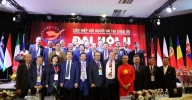
The Second Congress of the Confederation of Vietnamese Associations in Europe (2022-2026), was held in Prague, Czech Republic, and was attended by nearly 300 overseas Vietnamese delegates and Ambassadors, as well as guests from 23 countries.
WAJ- Young translator conquers the ancient Greek classic Anabasis – Memoir of the Persian Expedition
- Austria news - Usama Nosshy channel covers Asean's 55th anniversary celebrations at the United Nations in Vienna
- VietnamPlus Newspaper reported about ASEAN's 55th anniversary at the United Nations in Vienna
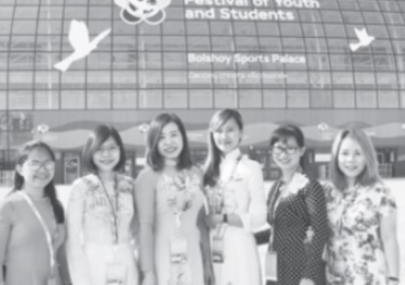
Interdisciplinary Culture
If you want to show light, fire it
By The Mosaics of the KingMOST VIEWED
-
1
The United Nations celebrates Victory Day

-
2
PHỞ 01 offers authentic Vietnamese cuisine to Europe

-
3
A devastating earthquake hits Turkey and Syria, leaving thousands dead and injured. Austria provides urgent aid

-
4
Agarwood scientific conference

-
5
Vietnamese female director wins prize at amsterdam international documentary film festival 2021

Writer To Hoai is famous for his book De Men Adventure Ky (1941) written for children. Currently, "Crickets" have traveled all over the world. The story has been translated into many languages and published in many countries around the world. He is likened to the Andersen of Vietnam.
WAJAt first glance, she doesn't stand out when standing next to her Asian girls, I become more and more in the middle European women. Yet, people like look at you, especially like to peek, every time you say, or every time she laughs. Asian-style face Dong, round black eyes that can talk, the corner of his mouth when also fresh. Long, silky black hair, clear voice, Standard and flexible pronunciation even when I speak the language German and Vietnamese.
WAJ

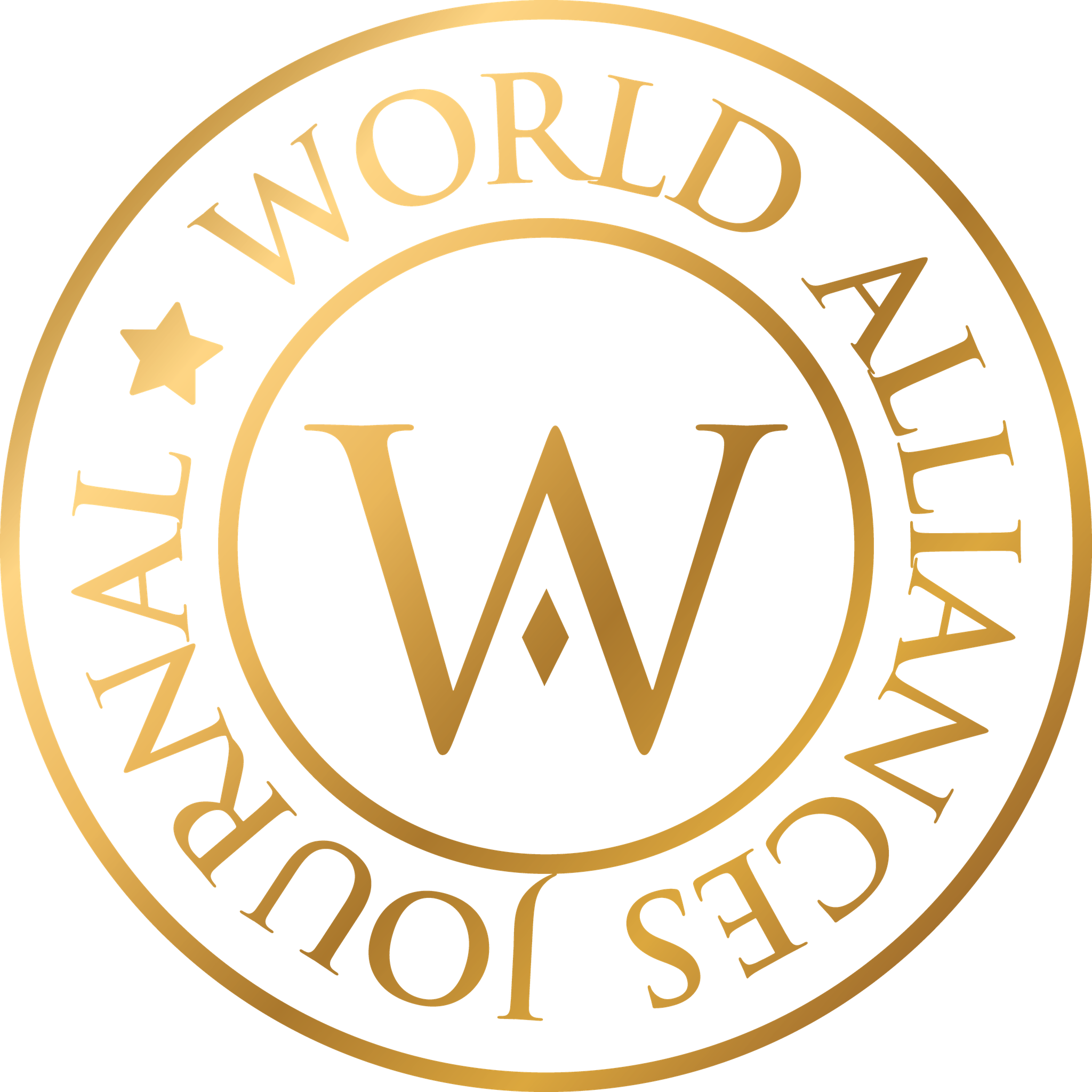

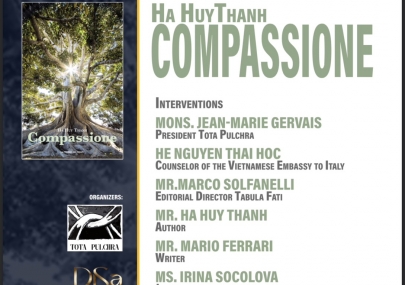
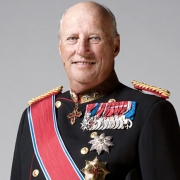
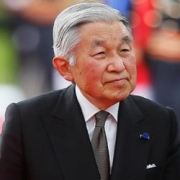






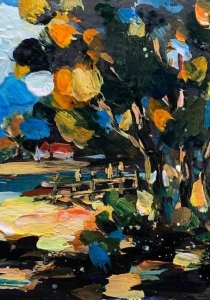
Comment